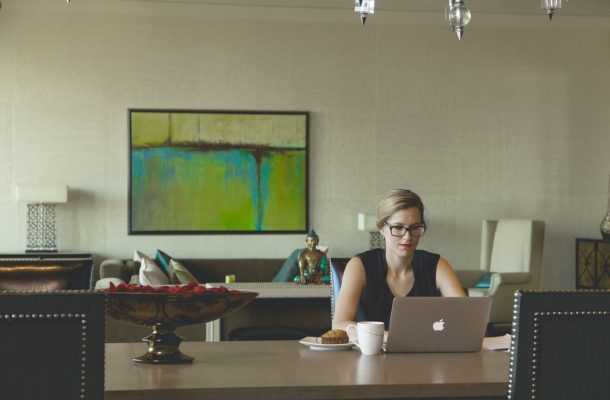We don’t trust you: the real reason you can’t work from home

Plenty of Australians have decent broadband speeds and computers in the home, so what’s stopping more of us from working from home?
Think about it. Why do we suffer a morning and afternoon commute (and pay for the privilege), only to sit in front of a screen all day to do something we could have easily done without leaving the house?
Workplace software company Citrix commissioned Galaxy Research to ask 1,024 office workers across Australia about flexible working arrangements in their workplaces.
The report finding? Seems we can’t be trusted to work from home.
“The harsh reality is that many businesses and government organisations do not trust their workers to be as productive at home as in the office,” the report found. “Australia needs to overcome its distrust of flexible working to unleash its full economic potential.”
Jamie Romanian, managing director of telephony and unified communications solutions company Shoretel (ANZ), said flexibility in the workplace needs to be built on trust.
“We need to trust staff to do the job they were employed to do,” he said. “We don’t need staff sitting at a desk; it’s OK to not be seen in the office. It’s not an issue of performance. It all comes down to results, whether you’re sitting in the office or not.”
Romanin said that at Shoretel, the 40-odd staff were free to come and go as they pleased.
“It’s not about work life balance, it’s about work life integration. Technology means we’re always switched on. If you’re going to expect staff to do a 7am conference call or answer an email at night, you need to give them that flexibility. Employers needs to give back to their employees.”
The key, said Romanin, is to implement a culture that starts at the top and works its way down.
“Company culture needs to change; we need to adapt to the way the world is going. People can be more productive working from home – fewer distractions and interruptions – and just go into the office for those times they need to be face-to-face.”
He’s right about workplace flexibility starting at the top. The Citrix report, ‘State of the flexible nation’, found the largest chunk of employees (65%) taking advantage of flexible working are those earning more than $130,000 per year. This group “regularly” works from home, while 48% of managers say they work from home occasionally.
Look everyone, I’m working!
As for everyone else, almost three quarters of respondents would like to work from home some days, but the reality is being in the office is important for other reasons.
Twenty-six percent of Generation Y (current 18-36-year olds) say they want to be “seen” working at the office by their peers and managers.
Jacky Sun, manager at medium-sized business ESV Accounting and Business Advisors, said his mostly Gen Y employees had not expressed widespread interest in working from home.
“We have 70 staff,” he said. “Most of them are in their mid-20s and enjoy coming in to work to see their workmates and collaborate. I know of just one who takes advantage of flexible working hours – she has young children.”
But for most, workplace flexibility is a must. The report found a staggering 74% of employees would consider moving to another job or employer if they knew it offered flexible work hours.
“Australia’s increasingly knowledge-based economy needs to keep modernising to compete with other progressive countries,” the report reads. “Businesses that bury their head in the sand and refuse to committ to flexible working hours are not only risking Australia’s economic future, they are ignoring demand from their own workers.”
Simon Raik-Allen (pictured below), chief technical officer at MYOB, says his own company’s research this month found 38% of 400 SMEs said employment flexibility was the key seller in attracting valuable talent.
“People get into their own business for the flexibility,” he said. “And if you’re loving that flexibility in your own business, other people are also looking for that. As an SME, it’s one of your weapons in attracting workers. Not everyone is suited to big corporations or big business.”
Then there’s the other benefits
There are further economic, environmental and time-saving benefits. Citrix says collectively we could be saving $108.7 million per week in travelling costs, and 8.2 million hours a week in travel time. The average commute-to-work time is 51.4 minutes a day and workers say they would speand at least some of that time working. And the money they save in travelling costs may be invested in other sectors of the economy, such as retail. (“I saved $25 not travelling to work this week, I can spend that money buying that t-shirt I wanted.”)
Australia’s ageing population (one quarter of the population will be aged over 65 by 2042) is another huge consideration. Citrix found 73% of workers aged 55-69 would “work more hours and stay in the workforce longer” if flexible options were available to them. Given our retirement age may soon be 70 years old (it’s currently 67 years), this would have a noticeable impact on our available workforce.
The numerous benefits of flexible working to the well-being of workers, the economy and the environment are irrefutable.
The law
Fancy the idea of working from home maybe once or twice a week?
Employees in Australia have the right to ask their employer for flexible working arrangements — such as starting and finishing at particular times, working from home, part-time work or job sharing — under the National Employment Standards (NES) provision in the Fair Work Act 2009.
However, you need to justify your desire for flexible working arrangements with reasons such as having school-aged children or being a carer. You also need to have been in continuous employment with that employer for at least 12 months. Your employer has the right to refuse your request but only on “reasonable business grounds”.
Outside of the law, employers can offer their own version of flexible working, such as simply giving staff the option to work at home one day a week.
“People want to take advantage of technology to work at the locations and times of their own choice,” the report concludes.
First 5000 defines a mid-sized business as one which employs between 20 and 199 people. There are around 42,000 such businesses in Australia, accounting for 25% of Australia’s GDP. The top 5000 of these generate revenue of between $10 million and $150 million per year.
Roulla Yiacoumi was the the editor of First 5000, the leading network for mid-sized businesses in Australia from July 2015 to October 2016.







